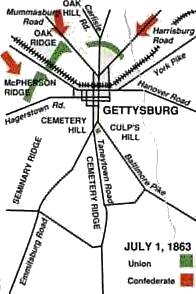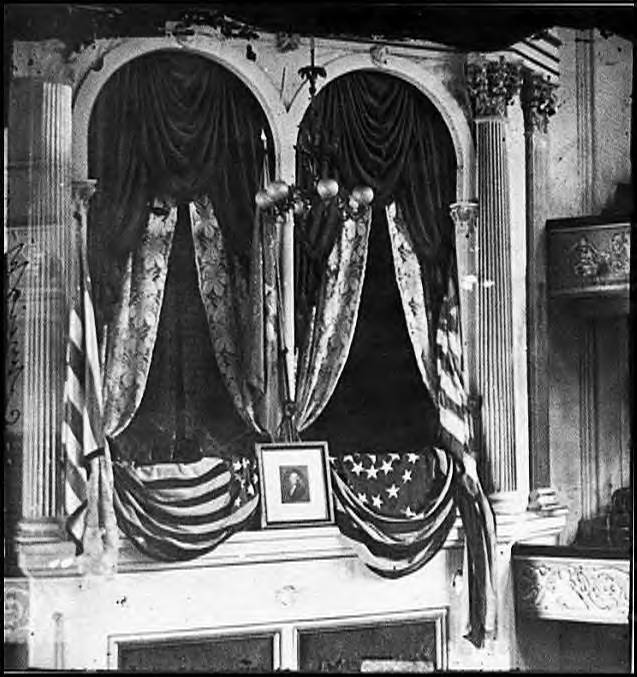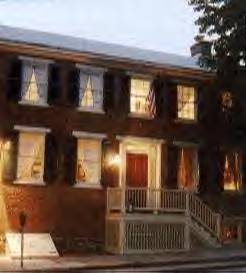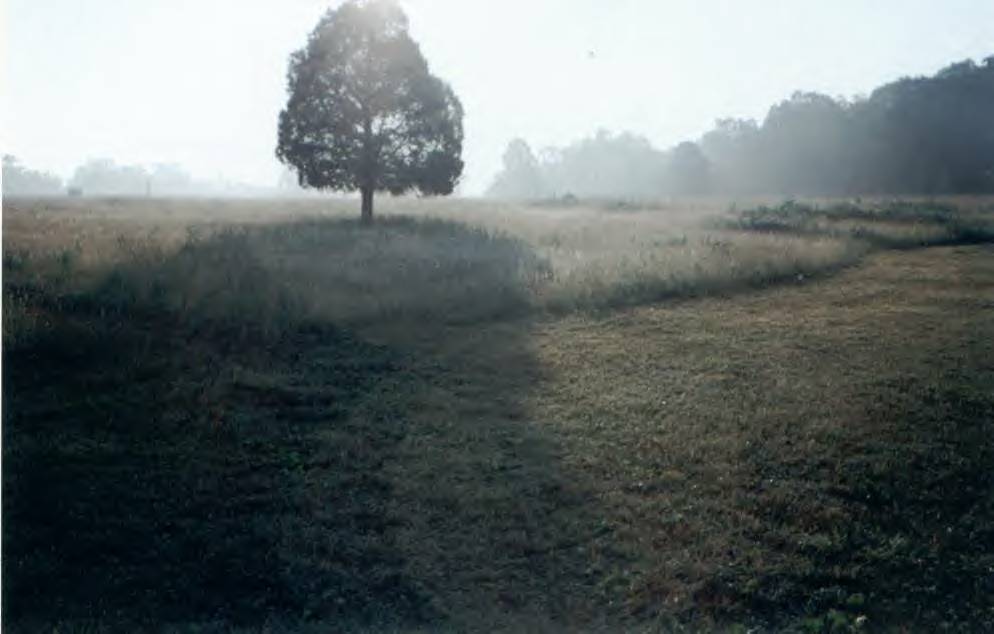|
Hampton Roads Monocacy New Market Seven Days Battles |
August 10, 1861 Respecting the neutrality of Ky., the Confederates undertook to gain control of Missouri. The beginning of Aug. there was a Confederate force of about 10,000 militia and volunteers from Mo., Ark., and La. advancing from southwest Mo. At Pocahontas, in northeast Ark., Wm. J. Hardee was organizing 5,000 Ark. volunteers. M. Jeff Thompson's "Mushrats" were nearby in southeast Missouri. At New Madrid on the Mississippi a force of 6,000 Tenn. troops under Gideon Pillow was located. The separate commands were expected to cooperate in an advance on St. Louis. The fiery little Nathaniel Lyon had assumed control of military affairs in Mo. Franz Sigel had clashed with Gov. Jackson's forces at Carthage, Mo., 5 July, and then withdrawn to join Lyon at Springfield. Since his department commander, Fremont, showed no concern for the safety of his force and would give him no support, Lyon determined to take the offensive against the advancing enemy. Lyon planned a concentric advance against the combined Confederate forces under McCulloch that were camped at Wilson's Creek, southwest of Springfield. While he himself led the main attack from the north, Sigel was to attack from the south. Both forces bivouacked a short distance from the unsuspecting Confederates the night of 9 Aug. The northern column moved out at 4 A.m. and drove back the outposts of Rains. Lyon's main body then advanced west of the creek, while a flank guard, tinder Capt. J. B. Plummer, moved on the opposite side against a Confederate force that had been seen advancing toward the "Corn Field" from the Ray house. Plummer's battalion of Mo. Home Guards was reinforced by the 1st US Inf. (300 men). In an hour's fight the Federals drove the enemy back to the Ray house.. but were then counterattacked and routed with a loss of 80 killed and wounded. Hebert's 3d La. ("Pelican Rifles") and McIntosh's Mounted Ark. were the Confederate troops involved. By about 6:30 A.M. the Confederate line under Price had been drawn up to oppose Lyon on Oak Hill. Totten's 2d US Arty. and DuBois's were supporting the Federals with 16 guns, while the batteries of Guibor, Bledsoe, Woodruff, and Reid (total, 15 guns) supported the Confederates. After an hour's fight Price was driven down the. hill to Wilson's Creek where he re-formed to counterattack. Greer's cavalry attempted to aid the latter movement by an envelopment of the Federal left by way of Skegg's Branch. However, Totten spotted this threat and repulsed it with his guns. Sigel, meanwhile, had advanced according to plan toward the battlefield from the south. At 5:30 A.M. he was in position near Tyrel's Creek and had placed a battery on high ground east of Wilson's Creek to fire into the cavalry camps of Greer, Churchill, and Major. When he heard Lyon's opening guns, Sigel routed the Confederate cavalry and then advanced toward Sharp's House, taking up an intermediate position on the way. At Sharp's House he was attacked and routed by McCulloch with Hebert's 3d La. and Churchill's cavalry. When Hebert's Pelican Rifles advanced in their natty gray uniforms, Sigel mistook them for the 1st Iowa and assumed that Lyon had already carried his portion of the field. Reid's battery enfiladed the Federals from positions on high ground east of Wilson's Creek while McCulloch's attack routed them. By 11 o'clock Sigel was out of the fight and the Confederates could mass their entire strength of two to one against Lyon. On Oak Hill the Federals had repulsed two attacks. Lyon had beet, wounded twice (in the leg and head) before finally being killed at about 10:30. It was about this time that the third Confederate charge was under way. The 1st Iowa was brought up from reserve but when ordered by Schofield to charge refused to go forward. At 11:30 the Confederates broke off the action and retired down the hill for the fourth time. Maj. Sturgis, who had succeeded Lyon, then ordered a withdrawal. This controversial decision was apparently prompted by Sturgis' lack of confidence in the ability of his tired troops, who were almost out of ammunition, to withstand another attack. "Had the fortunes of battle spared Lyon, Wilson's Creek might have been the most brilliant victory of the Civil War," wrote Monaghan. "General Sherman blamed the next four years of strife and pillage in Missouri on Lyon's death". Although a minor engagement, this was one of the most fiercely-contested of the war. The Federals were outnumbered 11,600 to 5,400. They lost 1,235 (223 killed, 721 wounded, 291 missing) while inflicting on the Confederates a loss of 1,184 (257 killed, 900 wounded, 27 missing). They killed or wounded 214 Confederates for every 1,000 of their own troops engaged, whereas the Confederates inflicted only 81 casualties on the same basis. Considering Sigel's poor performance, this over-all record is particularly remarkable. McCulloch did not pursue the Federals, as they retreated to Rolla. Price occupied Springfield and then captured a Federal brigade at Lexington, Mo., 20 Sept.
" I remember when this site started out as a three page Gettysburg site. Man has it grown! Great Job quot;Joe Willis--Scottsdale,AZ "This is a website for the ages!!"Bob Bullerton--Willows,CA. "I just sit here at my computer,chew on some hardtack and enjoy this site."Tico Carfello--Bronx, NY
Copyright © 2001-2002,Gettysburg Battlefield Online
|






